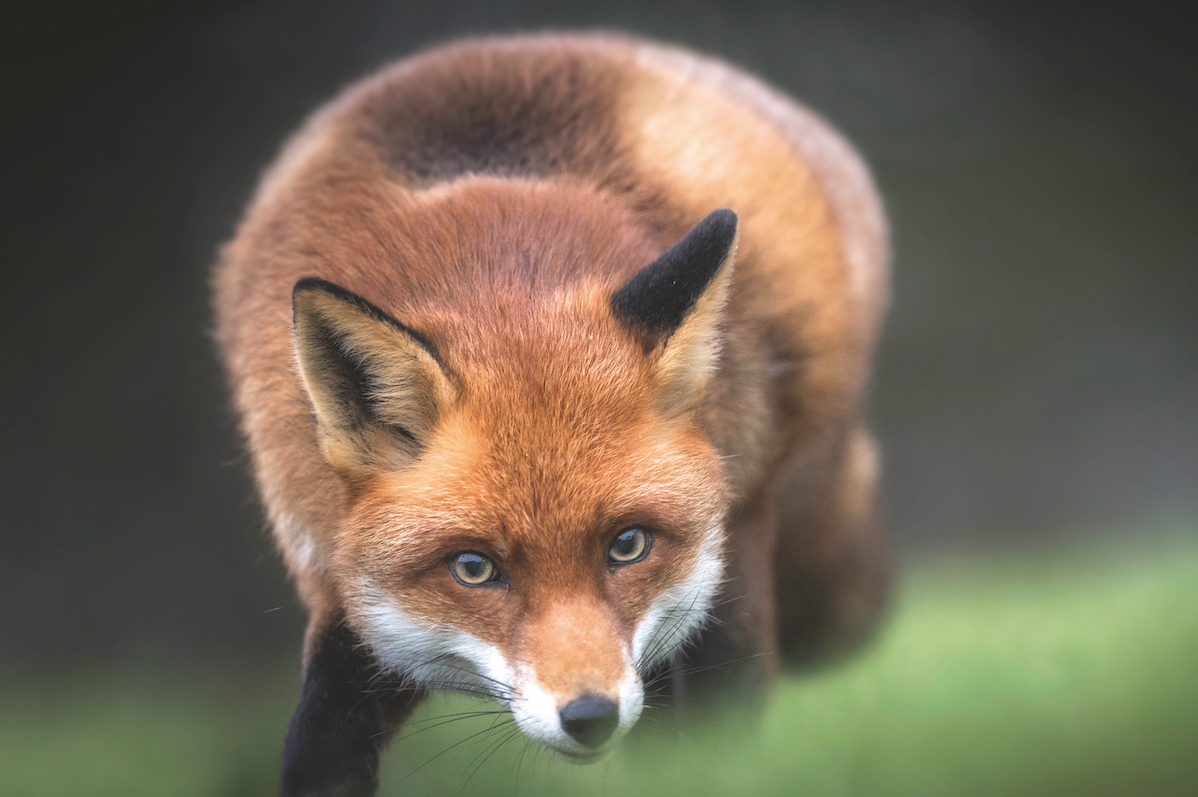Fox rot about Charlie
Patrick Hook responds to claims that fox numbers are dangerously on the wane

An article that caused some concern among shooters in my area of the south-west was recently published in The Telegraph. It claimed that since the Hunting Act 2004 came into effect, fox populations have been in catastrophic decline and that urgent action was required to remedy the situation. It said the solution was to overturn the act and allow dogs to hunt foxes again. While they were at it, the people quoted in the article made lots of other assertions, including that since “foxes are small, agile and often shot at a distance, wounding rates can be high”. They also said that they didn’t like snaring.
Letter
Apparently 103 vets signed the letter sent to ministers, but as there are currently nearly 25,000 registered vets in the UK, that means that 99% didn’t sign it. The article was clearly written by someone who doesn’t know much about shooting (apparently most of us are equipped with thermal weapon sights), which to my mind doesn’t give it much credibility. It also states that landowners are “killing some of the fittest animals and vixens with cubs, which is contrary to good conservation practice” and that “the welfare of foxes could be affected adversely unless dogs could be used”.
The pivotal claim was that fox populations have plummeted since the Hunting Act, with a 35% decline in the past 10 years alone. No references were given as to where this figure came from. It continued by saying that “in some parts of the countryside, red foxes are approaching extinction” and that environmentalists believe they should be considered “a species of conservation concern”.
The above is certainly not born from my experience – having been out foxing most nights for many years, I still see as many now as I did when the act came into effect. But then it may be that my area is not representative since there was a badger cull in the south-west and, as I wrote in this magazine recently, it resulted in large increases in fox numbers.
Evidence
Instead of relying on first-hand observations then, let us turn to proper scientific sources, such as the compliant Red List for Britain’s Terrestrial Mammals, which was published in 2020 by the Mammal Society under contract to Natural England, Natural Resources Wales and Scottish Natural Heritage. This shows that in the UK as a whole, the red (or European) fox is listed as being of ‘least concern’ – in other words, not at all threatened.
To be fair, in Scotland the fox is categorised as ‘near threatened’, which means numbers are falling, but that it is not yet at risk. The scientists involved said this may well be linked to falling rabbit numbers, which makes sense as both myxomatosis and viral haemorrhagic disease (VHD) have wreaked havoc with the Scottish rabbit population in recent years. In other words, the decline there may well have nothing to do with human fox control at all.
Other similar reputable work shows that in 1995 there were around 240,000 foxes in the UK, whereas in 2017/18 estimates were for between 357,000 (Natural England and the Mammal Society) and 430,500 (from density predictions based on habitat suitability score), depending on which figures you accept. Either way, it would seem that far from fox populations undergoing a catastrophic decline, they are actually increasing significantly.
The other issue that needs to be refuted is that of high wounding rates. I would estimate that more than eight out of 10 foxes we target drop on the spot, with few requiring a follow-up shot, which is usually done within seconds. All the other foxers I know work in a similar manner, so the assertion – like the other points raised – is erroneous.
The question has to be asked, therefore, what and who is driving these allegations?
I will leave it to you to decide, but the repeated call for organised packs of dogs to be used does rather give a clue. Personally, I believe that if the scientific review they have called for goes ahead, most or all of the claims made will be disproved. It’s just a shame that in trying to get their way, they’ve vilified us as legitimate shooters.

Although I’m a firm believer in using dogs when controlling foxes, my boy, a Korthals griffon, is only ever used to locate dead ones. He’s never allowed near live animals. Here he is ‘finding’ a vixen I’d shot earlier
Further information
If you’d like to delve further into the issues raised, here are some suggestions:
The International Union for Conservation of Nature – Compliant Red List for Britain’s Terrestrial Mammals: Mathews F, and Harrower C. (2020). Assessment by the Mammal Society under contract to Natural England, Natural Resources Wales and Scottish Natural Heritage. Natural England, Peterborough ISBN 978-1- 78354-485-1
The Mammal Society’s webpage on foxes
The Game and Wildlife Conservation Trust discusses the fox and its status here
Fox populations are difficult to assess – this site goes into the matter in detail

While I have no problem if people want to go after foxes with packs of dogs, there are many places – such as near railway lines and major roads, where they are unable to operate. This lamb, for example, which the farmer had hand-delivered the night before putting it out in the field, was killed a couple of days later by a fox, so he called me in. Even if it were legal, the local hunt couldn’t have done anything as the ground is close to a major road

The Telegraph article claimed that wounding rates are high when foxes are shot. I can’t speak for every shooter, but all those I know take the matter seriously and we are sticklers for accuracy. If a follow-up shot is necessary, which they rarely are, it is taken immediately








